Moving on from Maine
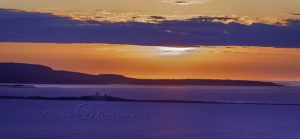 As I have expressed in recent blog posts, Maine has been quite a fruitful shoot and experience for me. I have spent much time and effort in trying to maximize the photo opportunities that I had had there (past perfect tense) during John Paul Caponigro’s Workshop.
As I have expressed in recent blog posts, Maine has been quite a fruitful shoot and experience for me. I have spent much time and effort in trying to maximize the photo opportunities that I had had there (past perfect tense) during John Paul Caponigro’s Workshop.
That being said, I believe that I am at the point of moving on. I am moving on for the photos that I took in Maine provided an opportunity to refine my skills, and they pushed me to do this simply because of the material of the shots that I took. The photographs may not have been my best but I learned a lot of critical skills in evaluating them.
The current photo was taken on the second day of shooting in Maine, 2019 at sunrise, near Sandy Beach, Acadia National Park. A Canon 5DS, with an EF100-400mm f/4.5-5.6L IS II USM lens @ 158mm was used, having settings of f/8, 1.8″, 320 ISO, and being post processed with DxO PhotoLab II, ACR, using HDR, and Viveza and Color Efex Pro.
Watershed Event
If you follow my posts for this blog, you know that I approached a recent photograph workshop with John Paul Caponigro with a modicum of trepidation, putting it mildly. I have been acutely aware of my strengths and weaknesses as far as my photograph skills goes, and I knew that I was going to be challenged at JPC’s workshop. I was not disappointed.
First of all, I have to say, that I divided the workshop into two halfs: one part getting up and putting oneself into the settings (4:00 AM; autumnal Maine, in this instance) to actually take the shots. This part was exceptional, for, indeed, we were up before the sun rose and placed in a setting that definitely had potentials for good to great shots; the other half was the actual class time of instruction. While taking the photos was difficult (especially in trying to be creative), the second part of the workshop was more difficult in trying to align oneself with the instructions and insights that JPC was giving. With honesty, I have to say that I tried my earnest to “be JPC” (as a Zen master would instruct), but I could only come to an approximation of maybe 50% (tops) to seeing the photo world as he does. That is fine with me, though, for I do not want to imitate JPC, but I want to capture the spirit and vision he has for great photographs.
At this moment, I know what a great photo is not. My next task is to dig into my creative spirit to find what a great photo is for me.
The currently posted photo was taken at the Azalea Garden in Acadia National Park. It was shot in the afternoon with a Canon 5 DS camera, using an EF24-105mm f/4L IS USM @ 105mm, f/7.1, 1/5″, ISO 125. Post processing was done using DxO PhotoLab 2, ACR, a Gradient Map, Viveza, and Nik Color Efex Pro. It is far from perfect, with only the lower half being in focus, but the colors were phenomenal.
Out of My Element
Since my last post I’ve been putting together my portfolio. This activity is/was totally foreign to me and a bit disquieting, since I have always approached photography in recent years as an adventure, not knowing what kind of shots I would take. I really had no need to change this approach, but I decided to take a workshop in Maine in the autumn around the Acadia National Forest with John Paul Caponigro. One of John Paul’s suggestions to prepare for his workshop was to think of projects I wanted to do as well as put together a sampling of my photographing interests (portfolio, I presumed).
This caused a brief period of uneasiness since I really resisted in putting together a collection of my best (or what I thought were) photos. But, I decided that growth sometimes comes at a cost of uncertainty so I put together a portfolio. I was definitely out of my element and I struggled with doing this for two weeks; my wife assisted me in critiquing since I really did not trust my own judgements (at times).
Be that as it may, I finally began to see that what I liked about a lot of my photos (while valid) was not what others might see. Also, I began to see that while I liked certain photos for their composition they did not meet the precision of focus, color or tonality that I believed also drove me to capture scenes.
I have put my portfolio “to bed” for the foreseeable future. What it is, it is. I definitely am always thinking of my next photo, and still want to shoot photography that way. The portfolio exercise was good and accomplished something. There is a tendency to see a portfolio as static; however, I generally shoot photos in an on-going, dynamic fashion and have a running series in my head of the “real life portfolio” that I am involved in.
I have posted this current photo in this post although it also exists (at least currently) in my online Gallery on this site. The reason I did this was to use it as an example that what I thought was a good photo for my Gallery is not a good photo after completing the exercise of putting together my portfolio for John Paul. The current photo was taken with a Canon 5 DS, using an EF100-400mm f/4.5-5.6L IS II USM @ 100mm, f/4.5, 2″, ISO 3200, and post processed with DxO PhotoLab 2 , ACR, and Photoshop CC 2019, using a Gradient Map.
Good Enough
When is good, good enough—at least in photography?
This question has been rolling around in my head lately, simply because I believe I’ve made some gains in growing photographically. Admit-ably, this is a very subjective statement, but since I have no one to bounce it off of, I’ll stick with it. But then again, even if I had someone to bounce it off of, that other person’s perception of my photographs would be highly subjective based on his/her perspective.
But, to get back to my point… How is one to judge growth in an art form? In broad parameters, one can say that in photography a photo is poor rather easily if it is out of focus, poor developed, or not having composition pleasing to the eye (of most people). Another photograph can be judged as good if it is in focus, has good composition, but does not elicit any emotional/aesthetic response from the viewer. In other words, it’s just a good photo.
That last point is where I am at in taking photographs. I, more or less, can craft a good photograph and the subject matter may be more than an ordinary view of a certain subject/theme, but artistically it may fall far short if it were presented to a judging body of established professional photographers. The photograph is good, but nothing more. It would not be worth the time and effort to print it, frame it and post it in a space where others could appreciate its worth.
When all things are said and done, one has to say that “good enough” is when you are happy with the results of your work in making a certain photographic capture possible to express the essence of that particular scene/theme at which you were pointing your camera.
The above musings are relevant to where I am…in a nascent nexus of some qualitative photographic growth. I hope it is true. But even if it were not, the journey has been an interesting one.
The particular shot in this post occurred after having lunch at a most remote spot in Norway at the Stalheim Hotel which overlooked a magnificent valley road, the Stalheimskleiva, which is one of the steepest roads in norther Europe. A Canon 5DS camera, with a EF24-105mm f/4L IS USM @ 28mm, f/13, 1/125″, ISO 50, post processed with DxOPhotoLab II, ACR, Photoshop CC2019, using a Gradient Map, and Nik Viveza.
Photopills: Absolutely Great
- At April 13, 2019
- By Firstmate
- In Canon EOS 5DS, DxO PhotoLab, Italy, Nik Software, Photopills
 0
0
I have had the Photopills App for at least two years, and I have used various features of it (by the way, it is an app that is jammed packed with features and information; it really is the only app you need if you are a photographer, hands down). But I was somewhat intimidated on the more involved and powerful aspects of it, namely locating the Milky Way, Moon, and Sun based on certain geographical locations and times. So, I never used these more powerful features.
I finally relented and figured out how to use them by viewing the creative videos that Photopills has on its website. I was blown away at what I could accomplish with this tool (especially how I underutilized it).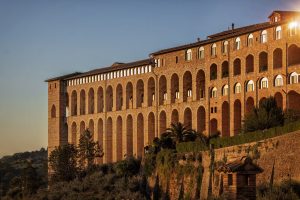
My scouting schedule for trying to set up different photo shots for foreground and astronomical events ( e.g., moon, milky way) was accurately filled in for the next year, and gave me a definite schedule for shooting potentially great shots.
The currently posted photo is a serendipitous shot of part of St. Francis Basilica in Assisi, Italy at sunset time. The colors of this part of Italy are unique, and I had wished that I could have captured more of them. But I will have to wait for more magical moments in the future, especially if St. Francis grants this prayer. The photo was taken with a Canon 5DS, EF24-105mm f/4L IS USM @ 105mm, f/10, 1/320″, post processed with ACR, DxO PhotoLab2, Color Efex Pro, and using a Gradient Map.
Calm Within Chaos
- At April 08, 2019
- By Firstmate
- In Canon EOS 5DS, DxO PhotoLab, Italy, Nik Software, Uncategorized, Venice
 0
0
 The visions of my visit to Venice in the fall of 2018 still haunt me. There are so many moments which live in my visual memory that I was unable to give substance to as far as a concrete photograph. Maybe this is the intentionality that was spoken of in philosophy of previous decades. That is, my mind intending and capturing the world (or object thereof) and trying to give meaning or form or some kind of representation to it. In other words, to capture this reality in some concrete form that the mind perceives in so-called immaterial ideas.
The visions of my visit to Venice in the fall of 2018 still haunt me. There are so many moments which live in my visual memory that I was unable to give substance to as far as a concrete photograph. Maybe this is the intentionality that was spoken of in philosophy of previous decades. That is, my mind intending and capturing the world (or object thereof) and trying to give meaning or form or some kind of representation to it. In other words, to capture this reality in some concrete form that the mind perceives in so-called immaterial ideas.
The above tries to describe the process of me trying to take a photo of a unique experience and then translating this into a printed form, viz. photograph. The great photographers have successfully accomplished this process from what their mind’s eye has seen to what exists in their photographs. Every other aspiring great photographer is trying to imitate this process.
Venice was so unique and visually stimulating that it leaves one overwhelmed.
When in Venice I attempted to accommodate myself to its challenges, namely time of day, crowds, time pressure, unfamiliarity of surroundings. In other words, hit or miss “tourist photography.”
The posted photo provides somewhat of a counterpoint to the maddening crowd of Venice. That is, the quiet and calm of one of the finest hotels in Venice, Hotel Danieli. The hotel exists in the heart of the most intense tourist activity of Venice, i.e. right off the Riva degli Schiavoni.
[As an aside to my above post, I must note that in viewing one of Kelbyone.com videos, I was struck by the fact that it was filmed at the Hotel Danieli. Be that as it may, it is nice to know that my membership fee in KelbyOne pays for this type of corporate benefit.]
In any event, I am pleased to a degree that I was able to capture Calm within Chaos in Venice.
The posted photo was taken with a Canon 5Ds, with a EF24-105mm f/4L IS USM lens @ 24mm, f/6.3, Exposure Compensation -1.33, 1/50″, 6400 ISO, post processed with DxO Photolab 2, ACR, DxO Nik2018 Viveza 2, and a Gradient Map.
Failed Photo Shoot
- At March 19, 2019
- By Firstmate
- In Canon EOS 5DS, DxO PhotoLab, Milky Way, Nik Software, RI
 0
0
I mustarded all the energy and creative drive within me to go out on a mid-winter’s night to an island in the middle of Narragansett Bay to try to photograph a panorama of the Newport Bridge under the arch of the Milky Way. I had used the app PhotoPills to determine that the Milky would indeed be in this position as it had been. The trouble was that I was shooting to the northeast from Jamestown, RI Center which naturally had the background of Newport and the U.S. Naval Base which was brightly light affording a ton of light pollution to my ill-planned shoot (since I thought this would not be that much of an issue). It was!
The other fact of my failed photo shoot was that I was shooting at c.2:30 AM with a 15º temperature. I thought I was well dressed for the elements, except I underestimated that my hands (not gloved) would be exposed for over an 1 1/2 hour time period. Needless to say, I panicked (to a degree) at that time (at the end of 1 1/2 hrs.) since I did not have any strength in my hands. Luckily by that time I had retreated to my car but still had trouble retrieving the car keys from my jean pocket.
Lesson learned. Do not underestimate the elements, as well as, pay attention to the shooting environment of your target figure (in my case, the light pollution of the city).
This posted panorama was taken with a Canon 5DS, using a Canon EF16-35mm f/2.8L USM @ 25mm with an f/2.8, 20″, ISO 160. These settings are a bit out of the ordinary for shooting the Milky Way but I was trying to adapt to the light pollution. So much so, that I even used a graduated 3-stop neutral density filter to deal with the light pollution. Post processing was done with DxO Photolab 2, Adobe CR, and Color Efex Pro 4.
Addendum: The photo above does not show the Milky Way simply because of my camera settings. At the very least the ISO should have been 3200, and a shutter speed of 20-30″ to capture the stars. I somewhat captured the bridge but at too great a cost of a successfully planned photo. In other words, details matter.
Patriots: The Legacy Continues
How does one photograph an airplane to make it interesting? It has to be in the context that the plane finds itself in. For example, a misty morning with trail streamers following the airplane’s wings as it ascends or descends. Or, it may be a lightening burst near the plane or around the plane with other ominous clouds and rain.
But on a clear day an ordinary plane landing or takeoff is uninspiring as far as a photographic moment.
The current photo was taken on a beautiful day in the first week of February at Green State Airport in Warwick, RI (officially listed as in Providence), with actually balmy weather. So, while the atmospheric conditions were perfect for a photograph at 2 PM that day, there was no visual drama to capture the human eye.
Except, if one searches out the human story behind this plane landing. Which just happens to be a most historic moment in the history of sports. Namely, the capturing of a 6th Lombardi Trophy by the New England Patriots in the LIII Super Bowl of 2019.
The photo of the Patriots plane landing at Green State Airport was the homecoming of the 2018-19 Patriots Team landing after capturing the Lombardi Trophy after overcoming all odds in doing so. I will let History tally the greatness of this accomplishment.
All I wanted to accomplish in taking this photograph was capturing that moment of arrival. The use of multiple planes was style imposition to elicit the anticipation of welcoming home a Champion.
The photo was taken with a Canon 5DS for the six planes in the current posting. Each plane photo had manual settings of f/11.0, 1/640″, with ISOs of 200 or 250, using a Canon EF100-400mm f/4.5-5.6L IS II USM @ multiple settings of 400mm, 312mm, post processing with DxO Photolab 2, Adobe Camera Raw 2019, Viveza 2, DxO Nik Color Efex Pro 4.
Pieces & Piecing It Together
It’s been over three months from my epic tour of Italy where I took over 2700 photos. That tour or at least the photographic part of it has been haunting me through that whole time frame. Despite my pre-trip preparations and setting up shooting strategies, I must say that they proved not to be that effective. Was it the strategy, my implementation of that strategy, or other forces that made the shooting aspect less than optimal in its results is hard to say.
I’ve gained some perspective over the three months of processing and thinking about the photos I had taken, and while initially I was quite despondent regarding my results, I have come to see that, in reality, I probably could not have done any better considering the circumstances of trying to shoot “professionally” in a less than optimal environment.
What I am trying to say is that I have had the task over the last few months of shifting through the hundreds of photos I’d taken, and evaluating them more microscopically, as it were. What I discovered is that many times my approach and composition of shots were great, but the ever constant out of focus or blur was present. I anticipated the possibility of these types of circumstances (where I might be rushed in places with new and different lighting situations) and try to compensate for this. My so-called anticipated solution to solve this potential problem was to shoot in manual mode, setting a high shutter speed with an aperture that I could quickly adjust for low light vs high light, and then simply put the ISO on automatic. For some reason(s) this often failed me. I probably would have more keepers if I had used the strategy of using Automatic Mode.
The above being said, I managed to have some success, but not with out working in post-processing to get it. Thus, the above title to this post, Pieces & Piecing It Together. The bright side to this current phase of less than optimal in-camera shots was that I was forced to beef up on my post processing skills. Personally, I much rather get it right in the camera, first.
The current photo to this post is that of wallpaper at the Villa Carlotta on Lake Como, Italy. The Villa was a most wonderful place with artisan craftsmanship throughout. The wallpaper had embroidery type details to cover the seams. There were several types of these embroideries in various room. For this photo I compiled three of them to maximize the effect they produced from viewing them in situ. The photos was taken with a Canon 5DS, EF24-105mm f/4L IS USM @ 65mm, f/5.6, 1/100″, -0.33 Exposure Compensation, ISO 6400, post processed with DxO PhotoLab, Adobe Camera Raw, Photoshop CC, and Color Efex Pro.

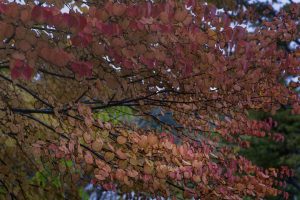

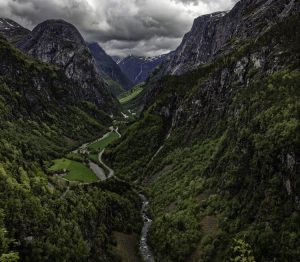
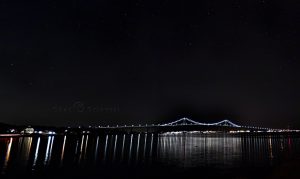
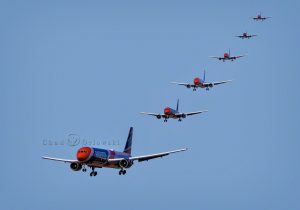
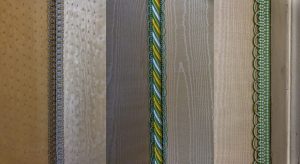
Recent Comments